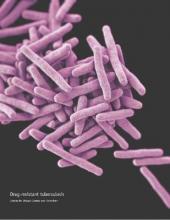Using more than five agents to treat multidrug-resistant tuberculosis markedly increases the cure rate by as much as 65%, according to a report published online Dec. 29 in PLOS Medicine.
At present, the World Health Organization recommends a regimen of pyrazinamide plus at least four second-line drugs that are likely to be effective, based on the patient’s previous exposure, background resistance levels in the community, and any drug susceptibility testing results from known cases in contact with the patient. But recent evidence suggested that including even more drugs in the regimen might improve clinical outcomes, said Courtney M. Yuen, Ph.D., of the Centers for Disease Control and Prevention, and her associates.
The researchers performed a secondary analysis of data for 1,137 participants in the Preserving Effective Tuberculosis Treatment Study (PETTS), an international prospective cohort study of patients with multidrug-resistant pulmonary TB. These patients were followed for a median of 20 months, undergoing sputum cultures for TB every month. The researchers used time to sputum culture conversion as the indicator of treatment effectiveness.
Receiving at least six potentially effective drugs per day raised the likelihood of sputum culture conversion by 36%, compared with using the recommended five drugs. In addition, for patients receiving at least one untested drug – any antituberculosis agent given empirically, without susceptibility testing – in their five-drug regimen, adding an extra potentially effective drug raised the likelihood of sputum culture conversion by 65%. Even adding an extra untested drug to a five-drug regimen improved the likelihood of sputum culture conversion by 33%, Dr. Yuen and her associates said (PLOS Med. 2015 Dec 29. doi:10.1371/pmed.1001932).
“We observed a benefit to receiving a greater number of potentially effective drugs ... as well as an interaction in which the presence of more effective drugs enhanced the benefit of untested drugs. Both of these results add to existing evidence that increasing the number of drugs in multidrug-resistant TB regimens is advantageous,” they noted.
The WHO initially recommended a regimen of four drugs for these patients in 2006, then raised that number to five in 2011. “Our results suggest that treatment might be further fortified by adding additional potentially effective drugs,” the investigators said.


